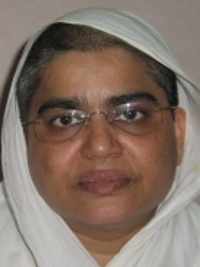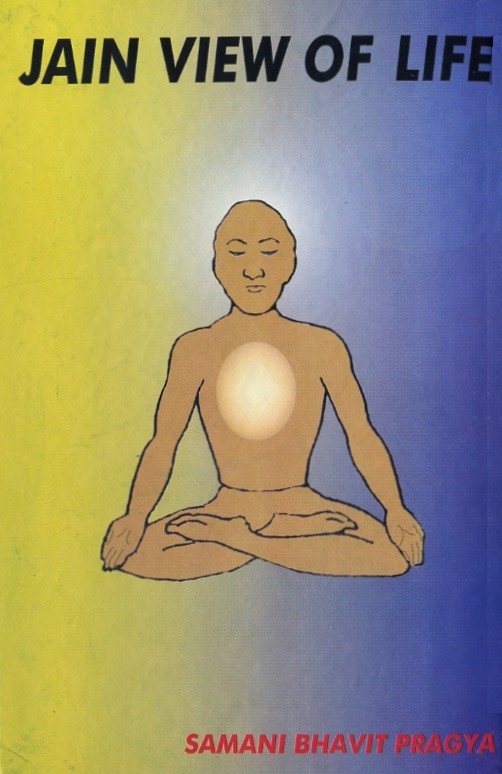The Key to Realization
The doctrine of soul is regarded in Indian philosophies, but the presentation of the soul is of different types. Some identify soul as an idealistic abstraction. On the other hand, some say that soul is the essence of life. From immemorial times, there are two main traditions, theism and atheism. The theists have a firm determination regarding the existence of the soul, karma, fruits of karma, liberation, etc. They say that the soul exists; it is an invisible entity and eternal. The soul causes pleasure and pain, and it enjoys the fruit of good and bad actions. There are means of getting rid of karmas, namely samvar (a stoppage of the influx of karmas), and nirjara (the dissociation of karmas). Salvation is achieved through practice of samvar and penance.
Characteristics of the Soul
The characteristics of the soul is knowledge and percep-tion. It is also possessed of the virtue of contraction and ex-pansion. Through this quality, it pervades the physique. An ant expands himself in the form of an elephant and an elephant contracts himself to assume the body of an ant. Due to the quality of contraction and expansion, the soul thoroughly pervades the length and breadth of the body.
Atheist's Perspective
In contrast, the atheist does not believe in the existence of the soul because of its imperceptibility. In the atheist's view, one should live happily, eat butter, and even incur debts. Because in this view that no life exists after death, one might as well eat, drink, and be merry. The body is only a conglomeration of five elements - earth, water, air, fire, and space. When a man dies, the body will be reduced to ashes. They have no fear of any other world, and life is enjoyed in the present as much as possible.
The king Pradesi considered the body and soul to be distinct entities. In order to verify this belief, he conducted many observations. First, he locked a man in an iron cistern and sealed the iron lid tight. The cistern was well guarded. After a few days, the cistern was opened and it was found that the man had died. There was not the slightest hole in the cistern. The king said to Keshikumar, a monk, "If there was a hole in the cistern, the soul might be said to exist, but it does not appear to be so. The king also asked any person to report as to where they were after they died, but nobody came forward. The king went so far as to cut bodies to pieces in an attempt to locate the soul within the body. He also weighed criminals before and after execution, but found no difference in weight. After all these experiments, he came to the conclusion that the soul did not exist. The monk Keshikumar tried to give the king the right understanding. Keshikumar said, "Although the fire resides in sticks or fuel, cutting wood into small pieces does not show you where fire resides. In the same manner, soul is not found in every piece of the body."
Theist's Perspective
The soul is formless, weightless, and imperceptible; it is not a commodity like an iron bar which can be shown in hand. The wind blows, but it is not visible to the eyes, and its existence can be determined through its operation. Similarly, electricity is invisible. Its existence can be visualized through dazzling light or the operation of a fan. Radio and television signals are motivated by electromagnetic forces whose existence are demonstrated through their effect and operations. The soul is similarly imperceptible through the sensory organs. In such a way, the monk Keshikumar convinced the king regarding the independent existence of the soul.
Once, during a philosophical discourse on the subject of the soul, a young man said to Panditji, "You are talking about soul. If the soul exists, show us, otherwise what is the use of this absurd discussion." The philosopher replied, "O young fellow, I will satisfy your query, however, before answering this question, I would like to drink some milk. Due to speaking for so long a period, my throat has become dry." The young man went to get a glass of milk and gave it to him. The philosopher took the glass in his hand and kept peering into it for a long time. Finally the youth exclaimed, "What are you looking at?" The philosopher said to him, "I am looking for the cream in this milk." The youth wondered how foolish the philosopher was, and said, "Don't waste your time looking. I know the procedure for cream. First boil the milk, then make a yogurt. After that we have to churn it and cream will get this process." The philosopher said, "You are absolutely right, your question is answered by yourself." The youth could not follow the logic of the philosopher. Then, the philosopher explained to him, "If you want to realize the soul, three things are required similar to getting cream from milk. First the body must be heated through penance like boiling the milk. Second, your mind must become stable through meditation like a yogurt. Next, you churn yourself through the practice of relaxation, and then you may be able to realize the soul.
Heat the Body Through Penance
As the presence of the sun removes darkness and illuminates the world, similarly the practice of Tapa consumes impurities, toxins, and morbid matter, thus creating internal heat. Penance is of twelve kinds, six external and six internal.
- Anashan.
Renounce food for a day or more (Fasting).
- Unodari.
Eat a few morsels less then what you need.
- Vritti Snakshep.
Make a resolution to live with the minimum of necessities regarding food, material things, etc.
- Rasparityag.
There are six kinds of delicacies known as butter, oil, milk, curd, sweets, and fried foods. Renounce one or more according to the extent of your desire for penance.
- Kayaklesh.
Renounce attachment of the body, and develop the capacity for physical tolerance through āsana.
- Pratisamlinta.
Control of the senses and the mind.
Let's examine the scientific basis behind penance.
While fasting, fat and morbid accumulation are put into use, and then other reserves are drawn upon. In one day's fast, the body releases 2303 calories of heat. The person sheds layers of fat and unnecessary weight. Old and dying cells are completely digested by lysosomal secretions.
Make the Mind Stable Through Meditation
The habit pattern of mind is to dwell in the past and to keep travelling down memory lane or anticipate the future. Mostly, thoughts of the past and plans for the future distract people from living in the present. This leads to a drain of energy and endless distractions in life. This is why the great spiritual teachers exhort us to live in the present. As Longfellow said:
Trust no future how'er pleasant.
Let the dead past bury its head.
Act in the living present.
Heart within and God o'erhead.For the realization of the self, it is necessary to live each and every moment in the present. Practice of alternative breathing makes the mind stable. Inhale through the left nostril and exhale through the right; then inhale through the right nostril and exhale through the left. Again inhale through the left nostril, and carry this cycle on for ten minutes. Not only does this practice make the mind stable, but it strengthens the nervous system. Ida, Pingala, and Sushamna are involved in this exercise. Ida, situated in the left nostril, is also known as the moon nerve. It gives a cooling effect. Pingala flows through the right nostril and is known as the sun nerve. Sushamna is situated in the spinal column. It is related to the spiritual aspect of life. It flows for a brief period during the day and night. It is said that when the right nostril is active, hard work, discussions of serious matters, fighting, and similar activities should be done. When the left nostril is active, spiritual practice, chanting mantras, meditation, and philosophical discussions are appropriate. The right nostril helps the digestion, gastric juices, etc. When both nostrils are inactive that is the best time for meditation and concentrating the mind on a particular subject. Alternate breathing is a powerful tool for making the mind stable and steady.
Churn Oneself Through Relaxation
Relaxation is a very important factor in disconnecting oneself from the body. In a state of relaxation, man realizes that the soul is distinct from the body. They are not one. The technique of relaxation is to lie down on your back, keep your hands by the side of your body, with the palms facing upwards. Keep the legs apart without touching one another. Concentrate your conscious mind on the right big toe, and then on the other toes, sole, heel, ankle and calf muscles, knees, thighs, hip, hip joint, etc,. Similarly, relax the left leg. Utilize auto-suggestion and experience that the lower part of the body, including each and every muscle and nerve down to the cellular level, is relaxing. Realize that the entire lower portion of the body is relaxed. In the same way, achieve relaxation of the middle portion of the body from the waist to the neck.
Relax the lower abdomen, the upper abdomen, the front, the back, the right side, the left side, the outside, and the inside of the abdomen. Relax the organs within the abdomen; the large intestine, small intestine, kidneys, spleen, liver, pancreas, stomach, diaphragm, chest, the entire rib cage, lungs, and heart. Utilize auto-suggestion to achieve relaxation of the middle portion of the body. Then relax the right hand and the left hand. Separate the two rows of the teeth and relax them. Loosen the muscles and relax the cheeks, nostrils, forehead and, lastly, the head. Feel that the body is becoming lighter and lighter. Perceive the body to be floating in space like a straw. Experience complete detachment from the body. Breathe gently in and out. Again travel quickly from the head down to the feet, and from the feet up to the head. Experience the feeling of vital energy flowing into each and every part of the body.
Realize the lightness in the whole body. Conclude this exercise by three long breaths. Relaxation can also be performed sitting or standing. Standing relaxation is the best of the three.
For self-realization or to achieve liberation, all of the foregoing aspects are essential; heating the body through fasting, quietening the mind through meditation, and churning oneself through relaxation. When gold is heated to a certain temperature, all inferior metals are burnt. Through penance (fasting), karmic particles that cover the soul are burnt away and the soul becomes pure consciousness. As gold is purified by fire, the soul is purified by the fire of penance, meditation, and relaxation. These three ways lead a soul to freedom from bondage and help in achieving the desired goal - the path of self-realization.
 Samani Bhavit Pragya
Samani Bhavit Pragya
